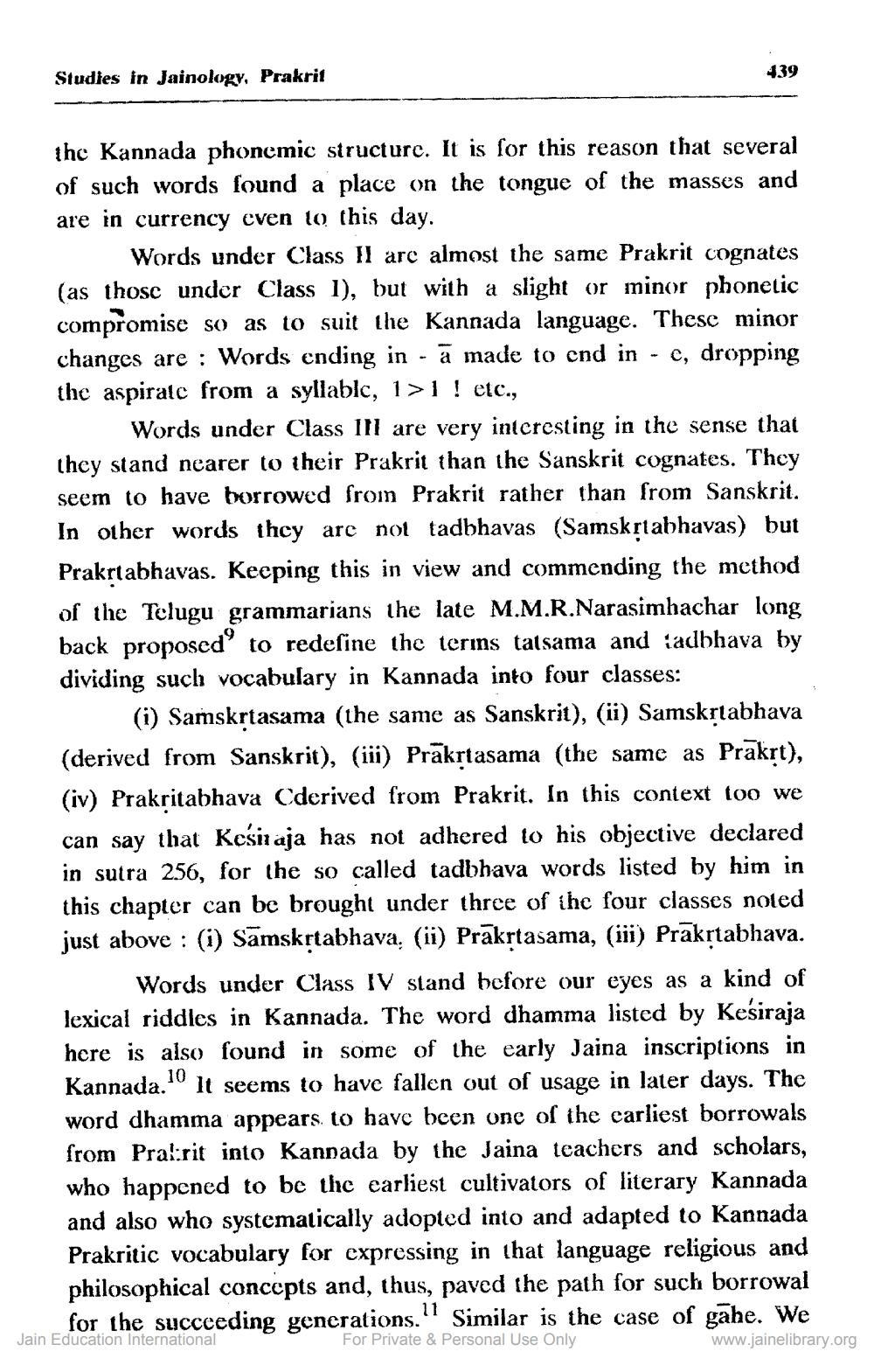________________
Studies in Jainology, Prakrit
439
the Kannada phonemic structure. It is for this reason that several of such words found a place on the tongue of the masses and are in currency even to this day.
Words under Class II are almost the same Prakrit cognates (as those under Class 1), but with a slight or minor phonetic compromise so as to suit the Kannada language. These minor changes are: Words ending in a made to end in c, dropping the aspirate from a syllablc, 1>1 ! etc.,
Words under Class III are very interesting in the sense that they stand nearer to their Prakrit than the Sanskrit cognates. They seem to have borrowed from Prakrit rather than from Sanskrit. In other words they are not tadbhavas (Samskṛtabhavas) but Prakṛtabhavas. Keeping this in view and commending the method of the Telugu grammarians the late M.M.R.Narasimhachar long back proposed to redefine the terms tatsama and tadbhava by dividing such vocabulary in Kannada into four classes:
(i) Samskṛtasama (the same as Sanskrit), (ii) Samskṛtabhava (derived from Sanskrit), (iii) Prakṛtasama (the same as Prakṛt), (iv) Prakritabhava Cderived from Prakrit. In this context too we can say that Kesitaja has not adhered to his objective declared in sutra 256, for the so called tadbhava words listed by him in this chapter can be brought under three of the four classes noted just above: (i) Samskṛtabhava, (ii) Prākṛtasama, (iii) Prākṛtabhava.
Words under Class IV stand before our eyes as a kind of lexical riddles in Kannada. The word dhamma listed by Kesiraja here is also found in some of the early Jaina inscriptions in Kannada.10 It seems to have fallen out of usage in later days. The word dhamma appears to have been one of the carliest borrowals from Pral:rit into Kannada by the Jaina teachers and scholars, who happened to be the earliest cultivators of literary Kannada and also who systematically adopted into and adapted to Kannada Prakritic vocabulary for expressing in that language religious and philosophical concepts and, thus, paved the path for such borrowal for the succeeding generations. Similar is the case of gahe. We
11
Jain Education International
For Private & Personal Use Only
www.jainelibrary.org




